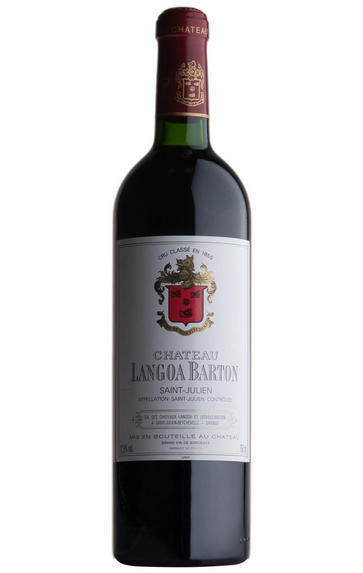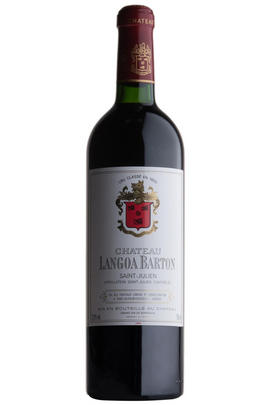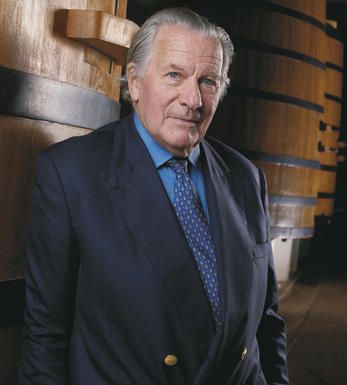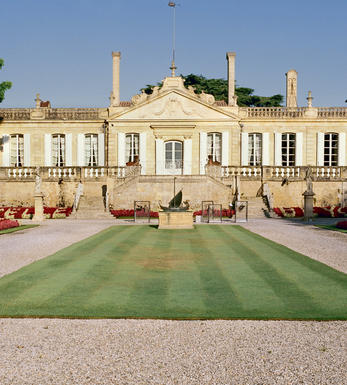
2009 Château Langoa Barton, St Julien, Bordeaux

Critics reviews
The 2009 Langoa-Barton has a gorgeous bouquet with blackberry, bilberry, cedar and light tobacco aromas that blossom from the glass. This feels so composed and pure. The palate is medium-bodied with sappy black fruit, fine-grain tannin, beautifully judged acidity and a svelte, languorous finish that fans out with style. What a gorgeous and utterly seductive Saint-Julien. It turns out to be Langoa Barton, a wine that I have rated very highly in the past.
Drink 2022 - 2045
Neal Martin, Vinous.com (March 2019)
Tar, cloves, and girolle mushrooms, with intense black fruits that are met by fresher red fruits, ensuring nothing is too overpowering. This is a great vintage at Langoa; it has the intensity that will please the crowds but the delicacy and St Julien finesse that make it true to itself. First-year for technical director François Brehant. 70% new oak.
Drink 2022 - 2040
Jane Anson, JaneAnson.com (March 2022)
The medium to deep garnet-colored 2009 Langoa Barton is scented of warm red and black plums, dried mulberries and blackcurrant cordial with touches of dried mint and new leather. Medium to full-bodied with a solid frame of grainy tannins and bold freshness, it has loads of red and black berry preserves layers on the long, savoury finish.
Drink 2019 - 2034
Lisa Perrotti-Brown, Wine Advocate (March 2019)
Very dark blackish crimson. Very concentrated, opulent nose. No ersatz sweetness, but very well-managed tannins and classic style. Bone dry and set for the long term. Classical texture.
Drink 2018 - 2032
Jancis Robinson MW, JancisRobinson.com (January 2013)
A rich and fleshy wine, yet it remains decisively dry. The attractive blueberry aroma and impressive supple tannins make this very harmonious. If it was slightly brighter in the nose, this would rate even higher.
Drink now
James Suckling, JamesSuckling.com (March 2019)
Backward, tannic and beefy, this youthful but formidable 2009 Langoa Barton exhibits a dense ruby/purple colour as well as lots of damp earth, underbrush and black currant aromas and flavours, medium to full body, lively acids and, not surprisingly, massive tannins (a characteristic of all the Barton wines). The overall impression is somewhat incongruous, having a certain precociousness in the aromatics but then clamping down on the taster in the mouth. I recommend waiting 5-7 years before opening a bottle. It should drink well over the following 20-25 years.
Drink 2017 - 2042
Robert M. Parker, Jr., Wine Advocate (December 2011)
Full, deep ruby. Deep, explosive aromas of cassis, plum, blackberry, dark chocolate, violet and sexy oak. Dense, pliant and deep, with a distinctly chewy texture to its sweet cassis and dark chocolate flavours. It is a very fine-grained wine with a long, rising, sweet finish featuring smooth, thoroughly ripe tannins.
Stephen Tanzer, Vinous.com (July 2012)
About this WINE

Chateau Langoa Barton
Château Langoa-Barton, 3rd Classified Growth, was the first of the two Bordeaux wine estates bought by Hugh Barton in the 1820s, the other being Léoville-Barton, 2nd Classified Growth.
Hugh Barton was a descendant of an Irish family which settled in Bordeaux in the 18th century and which has a long and distinguished history in the region’s wine trade. Both properties are still family-owned and run and together represent the longest tradition of unchanged ownership in the Médoc. After the death of the late Anthony Barton in 2022, his daughter Lilian and grandson Damien Barton have now taken the reins.
Langoa Barton has 20 hectares of vineyards (Cabernet Sauvignon 71%, Merlot 21%, Cabernet Franc 8%) lie on gravelly-clay soils. Vinification includes 18 months' maturation in oak barriques (50% new). Langoa Barton is vinified and matured in exactly the same way as Léoville-Barton and any difference between them must be put down to variations in the soils and exposure of their respective vineyard blocks.
Both Langoa and Léoville wines are models of typical St Julien restraint and elegance, and the château’s fair pricing policy, always with an eye to the long term , has won it many loyal friends amongst its customers. For years, Langoa Barton was considered slightly lighter and more forward than Léoville. However, in the last decade it has become noticeably deeper in colour and richer and more concentrated on the palate. Langoa Barton is now often the equal of Léoville.

St Julien
St Julien is the smallest of the "Big Four" Médoc communes. Although, without any First Growths, St Julien is recognised to be the most consistent of the main communes, with several châteaux turning out impressive wines year after year.
St Julien itself is much more of a village than Pauillac and almost all of the notable properties lie to its south. Its most northerly château is Ch. Léoville Las Cases (whose vineyards actually adjoin those of Latour in Pauillac) but, further south, suitable vineyard land gives way to arable farming and livestock until the Margaux appellation is reached.
The soil is gravelly and finer than that of Pauillac, and without the iron content which gives Pauillac its stature. The homogeneous soils in the vineyards (which extend over a relatively small area of just over 700 hectares) give the commune a unified character.
The wines can be assessed as much by texture as flavour, and there is a sleek, wholesome character to the best. Elegance, harmony and perfect balance and weight, with hints of cassis and cedar, are what epitomise classic St Julien wines. At their very best they combine Margaux’s elegance and refinement with Pauillac’s power and substance.
Ch. Léoville Las Cases produces arguably the most sought-after St Julien, and in any reassessment of the 1855 Classification it would almost certainly warrant being elevated to First Growth status.
Recommended Châteaux: Ch. Léoville Las Cases, Ch.Léoville Barton, Ch Léoville Poyferré, Ch. Ducru-Beaucaillou, Ch Langoa Barton, Ch Gruaud Larose, Ch. Branaire-Ducru, Ch. Beychevelle

Cabernet Sauvignon Blend
Cabernet Sauvignon lends itself particularly well in blends with Merlot. This is actually the archetypal Bordeaux blend, though in different proportions in the sub-regions and sometimes topped up with Cabernet Franc, Malbec, and Petit Verdot.
In the Médoc and Graves the percentage of Cabernet Sauvignon in the blend can range from 95% (Mouton-Rothschild) to as low as 40%. It is particularly suited to the dry, warm, free- draining, gravel-rich soils and is responsible for the redolent cassis characteristics as well as the depth of colour, tannic structure and pronounced acidity of Médoc wines. However 100% Cabernet Sauvignon wines can be slightly hollow-tasting in the middle palate and Merlot with its generous, fleshy fruit flavours acts as a perfect foil by filling in this cavity.
In St-Emilion and Pomerol, the blends are Merlot dominated as Cabernet Sauvignon can struggle to ripen there - when it is included, it adds structure and body to the wine. Sassicaia is the most famous Bordeaux blend in Italy and has spawned many imitations, whereby the blend is now firmly established in the New World and particularly in California and Australia.


Buying options
Add to wishlist
Description
Tar, cloves, and girolle mushrooms, with intense black fruits that are met by fresher red fruits, ensuring nothing is too overpowering. This is a great vintage at Langoa; it has the intensity that will please the crowds but the delicacy and St Julien finesse that make it true to itself. First-year for technical director François Brehant. 70% new oak.
Drink 2022 - 2040
Jane Anson, JaneAnson.com (March 2022)
wine at a glance
Delivery and quality guarantee